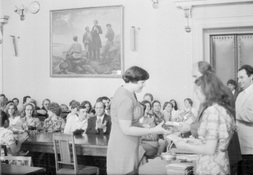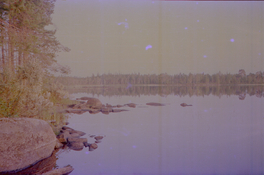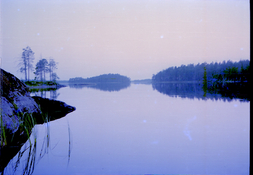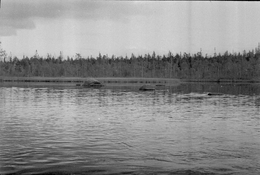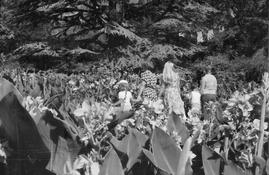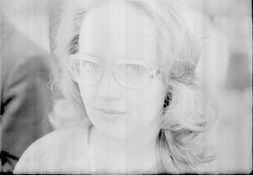-
Welcome to Photrio!Registration is fast and free. Join today to unlock search, see fewer ads, and access all forum features.Click here to sign up
You are using an out of date browser. It may not display this or other websites correctly.
You should upgrade or use an alternative browser.
You should upgrade or use an alternative browser.
Are there any reasons to keep scanned film frames as tiff files with RGB 24 and more bit. For further job
-
H
- Thread starter algusev2017
- Start date
Recent Classifieds
-
For Sale Cambo Wide 650 + 900 / Reflex
- Started by RoboRepublic
-
Sold 2x 4x5 Grafmatics + 12 septums
- Started by RoboRepublic
-
For Sale Several medium format cameras
- Started by campy51
-
For Sale 3 x Jules Richard Taxiphote _ French cabinet stereoscopic viewers
- Started by Manual Camera
-
For Sale FS: Tomiyama Art Panorama 170 Roll Film Holder & Viewer
- Started by B.S.Kumar
Forum statistics
I scan all my B&W film to 16-bit and color film to 48-bit at the highest optical resolution that testing has shown me to be the best that I can get from a particular scanner. This resolution number doesn't necessarily agree with the manufacturer's stated scanner resolution. These are all TIFF files marked as "Master" files. My philosophy is to scan once, then re-purpose each file for a particular use. Since I print my images, my needs are different from yours; you don't need much resolution to display on screens.
How limited is your storage?
Scanning is slow. You probably don't want to have to re-do it again, unless you have to.
Just make it easy to locate your stored scans.
Unless you plan to deal with replacing/repairing your scanner.
Scanning is slow. You probably don't want to have to re-do it again, unless you have to.
Just make it easy to locate your stored scans.
Unless you plan to deal with replacing/repairing your scanner.
Please write me your opinion about the reason to keep tiff files with 24, 48 RGB or 64 rgbi.
I try to keep the original scans at 16 bit/channel depth (i.e. 48 bit/pixel). Storage is relatively cheap nowadays. 24 bit = 8 bit/pixel, which is 256 values per channel, and it's what you see in typical web images (jpg). Definitely don't go below this. You can save some space by applying compression; a few file formats offer lossless compression, and it's of course also possible to apply only a small degree of compression by means of compromise between file size and quality.
I would definitely try to keep the original scans around in some way if you plan to do digital restoration on them.
However, the quality of the scans you've posted is very poor; there are severe problems with e.g. posterization and effective resolution is low. If possible, see if you can correct these problems before doing further work on these scans.
Smeared out detail due to compression or overly aggressive digital defect restoration (e.g. noise reduction).
Poor tonal rendering; problems with linearity; posterization, channel clipping.
Excessive noise due to digital sharpening.
More very severe clipping, linearity and detail smearing problems.
As you said, there are some more scanner-related problems such as the very apparent vertical banding.
The problems appear to be a combination of poor negatives, possibly malfunctioning scanner hardware, but mostly poor scanning control.
I save all my Epson flatbed scans to tiff files never to be edited as an original. Edits are done by Lightroom (usually). I usually spot out the dust spots on the tiff file as the only edit to it. After I edit colors, contrast, etc., I create secondary jpegs for slide shows for my 75" 4K TV. SInce 4K TV is 3840x2160 pixels, I make the jpegs 2160 high which also allows lots of room to crop the original 2400bpi scans especially when shooting MF and LF. Also when I create jpegs, I edit colors and output jpeg image files as sRGB as that color palette is what's used on the internet. Also, I use a very low jpeg compression value to avoid banding of skies especially.
- SMD
- Deleted
Ivo Stunga
Member
I second the approach of doing the best scan your equipment allows for and treating it as a master to be copied, worked on, but not altered.
Do this via non-destructive editing software like Lightroom and its alternatives that leave the original alone and "create" a "database" of your edits to be exported to a newly created image - again, leaving the original alone. Photoshop is an example of a destructive editing - it alters the source and if poor choices are saved to it...
My approach with Plustek is to scan at 7200 and 16/48 bit with Silverfast Double Exposure feature to aid with latitude pickup. And do some minor adjustments there too - like lifting shadows some 3 clicks, adjusting contrast - to better match the projected slide. Then to deflate the size closer to it's reported and reviewed optical resolution - about 3600. This is my master scan - never to be scanned again with the same scanner. Archival. All auto-edits that can be turned off are turned off, including noise reduction and sharpening. A clean file to be edited witn non-subscription, non-AI Lightroom.
1) So, yes - it's worth to max out your scanner, especially with BW images that are under 20MB @3600 this way.
2) Invest in a better scanner to avoid bad flavorings added. "Better" might even be a Plustek machine - I have only one complaint about my 7600i - it likes to create a sensor bloom in contrasty images. No banding, unwanted sharpening, unwanted noise-reduction or bit-depth issues to report. And it being hyperfocal - no misfocusing issues that plague flatbeds. And doing multiple scans - no wobbling geometry issues that plague flatbeds... again - resulting in better files that you can even sttich or HDR in post. It's a very slow, but very serviceable machine and price/performance champ;
3) Your current scanner does not produce archive-worthy images with that mass of bad flavoring added by it - I'd ditch it.
Do this via non-destructive editing software like Lightroom and its alternatives that leave the original alone and "create" a "database" of your edits to be exported to a newly created image - again, leaving the original alone. Photoshop is an example of a destructive editing - it alters the source and if poor choices are saved to it...
My approach with Plustek is to scan at 7200 and 16/48 bit with Silverfast Double Exposure feature to aid with latitude pickup. And do some minor adjustments there too - like lifting shadows some 3 clicks, adjusting contrast - to better match the projected slide. Then to deflate the size closer to it's reported and reviewed optical resolution - about 3600. This is my master scan - never to be scanned again with the same scanner. Archival. All auto-edits that can be turned off are turned off, including noise reduction and sharpening. A clean file to be edited witn non-subscription, non-AI Lightroom.
1) So, yes - it's worth to max out your scanner, especially with BW images that are under 20MB @3600 this way.
2) Invest in a better scanner to avoid bad flavorings added. "Better" might even be a Plustek machine - I have only one complaint about my 7600i - it likes to create a sensor bloom in contrasty images. No banding, unwanted sharpening, unwanted noise-reduction or bit-depth issues to report. And it being hyperfocal - no misfocusing issues that plague flatbeds. And doing multiple scans - no wobbling geometry issues that plague flatbeds... again - resulting in better files that you can even sttich or HDR in post. It's a very slow, but very serviceable machine and price/performance champ;
3) Your current scanner does not produce archive-worthy images with that mass of bad flavoring added by it - I'd ditch it.
Last edited:
Thank you for honest and attentive answer. When setting up scanning I did not think about colour, posterization etc. Simply put resolution, sometimes brightness.I try to keep the original scans at 16 bit/channel depth (i.e. 48 bit/pixel). Storage is relatively cheap nowadays. 24 bit = 8 bit/pixel, which is 256 values per channel, and it's what you see in typical web images (jpg). Definitely don't go below this. You can save some space by applying compression; a few file formats offer lossless compression, and it's of course also possible to apply only a small degree of compression by means of compromise between file size and quality.
I would definitely try to keep the original scans around in some way if you plan to do digital restoration on them.
However, the quality of the scans you've posted is very poor; there are severe problems with e.g. posterization and effective resolution is low. If possible, see if you can correct these problems before doing further work on these scans.
View attachment 383230
Smeared out detail due to compression or overly aggressive digital defect restoration (e.g. noise reduction).
View attachment 383232
Poor tonal rendering; problems with linearity; posterization, channel clipping.
View attachment 383233
Excessive noise due to digital sharpening.
View attachment 383234
More very severe clipping, linearity and detail smearing problems.
As you said, there are some more scanner-related problems such as the very apparent vertical banding.
The problems appear to be a combination of poor negatives, possibly malfunctioning scanner hardware, but mostly poor scanning control.
I second the approach of doing the best scan your equipment allows for and treating it as a master to be copied, worked on, but not altered.
Do this via non-destructive editing software like Lightroom and its alternatives that leave the original alone and "create" a "database" of your edits to be exported to a newly created image - again, leaving the original alone. Photoshop is an example of a destructive editing - it alters the source and if poor choices are saved to it...
My approach with Plustek is to scan at 7200 and 16/48 bit with Silverfast Double Exposure feature to aid with latitude pickup. And do some minor adjustments there too - like lifting shadows some 3 clicks, adjusting contrast - to better match the projected slide. Then to deflate the size closer to it's reported and reviewed optical resolution - about 3600. This is my master scan - never to be scanned again with the same scanner. Archival. All auto-edits that can be turned off are turned off, including noise reduction and sharpening. A clean file to be edited witn non-subscription, non-AI Lightroom.
1) So, yes - it's worth to max out your scanner, especially with BW images that are under 20MB @3600 this way.
2) Invest in a better scanner to avoid bad flavorings added. "Better" might even be a Plustek machine - I have only one complaint about my 7600i - it likes to create a sensor bloom in contrasty images. No banding, unwanted sharpening, unwanted noise-reduction or bit-depth issues to report. And it being hyperfocal - no misfocusing issues that plague flatbeds. And doing multiple scans - no wobbling geometry issues that plague flatbeds... again - resulting in better files that you can even sttich or HDR in post. It's a very slow, but very serviceable machine and price/performance champ;
3) Your current scanner does not produce archive-worthy images with that mass of bad flavoring added by it - I'd ditch it.
it is hard to find and deliver good film scanner in my location. So I shall set up my to do best, following your advice.
Thank you for honest and attentive answer. When setting up scanning I did not think about colour, posterization etc. Simply put resolution, sometimes brightness.
No worries; see if you can somehow achieve some improvement by changing scanning settings. Vuescan is very flexible, so there are lots of options. That's and advantage, but evidently also a drawback as it's easy to configure it in such a way that it'll produce very poor scans.
If the scanner somehow doesn't work out, you could always try a variant of camera 'scanning' if you have a decent digital camera at hand. There are many threads and guides on how to set this up. You'll need a suitable light source (something like a good LED drawing/tracing pad can work), a way to suspend the camera over the film, a decent macro lens and a column to block out any stray light and reflections.
| Photrio.com contains affiliate links to products. We may receive a commission for purchases made through these links. To read our full affiliate disclosure statement please click Here. |
PHOTRIO PARTNERS EQUALLY FUNDING OUR COMMUNITY:  |


